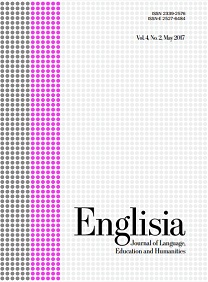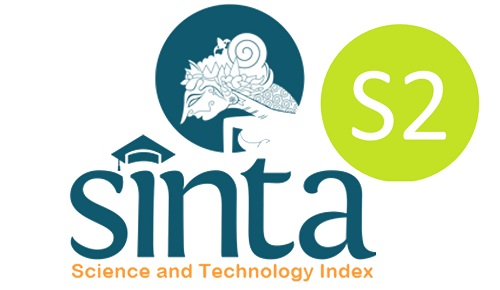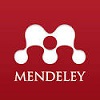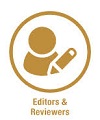Manifesting community language learning activities in Islamic boarding school speaking program
DOI:
https://doi.org/10.22373/ej.v12i2.28491Keywords:
Community language learning, Implementation, Collaborative learning environment, Islamic boarding schoolAbstract
Community Language Learning (CLL) is an educational approach designed to foster speaking proficiency. This study explores the application of CLL activities within an English-speaking program at an Islamic boarding school in Indragiri Hilir Regency, Riau. Employing a qualitative case study methodology, data were gathered through observations, interviews, and document analysis, involving four teachers and two students. Findings reveal that the CLL approach was implemented through four key activities: repetition, free conversation, listening practice, and daily speaking exercises, supported by media such as vocabulary boards (Richards & Rodgers, 2001). These activities significantly enhanced students’ speaking skills, fostering an interactive and collaborative learning environment. In conclusion, specific CLL activities proved effective for developing speaking proficiency in this Islamic boarding school context. Recommendations include addressing identified challenges to further optimize program effectiveness.Downloads
References
Al-Taneiji, S. (2009). Professional Learning Communities in the United Arab Emirates Schools: Realities and Obstacles. International Journal of Applied Educational Studies, 6(1), 16–29.
Al Zoubi, S. M. (2018). The Impact of Exposure to English Language on Language Acquisition. Journal of Applied Linguistics and Language Research, 5(4).
Brown, H. D. (1994). Teaching by principle: An interactive approach to language pedagogy. Practice Hall Regents.
Brown, H. D. (2001). Teaching by principles: An interactive approach to language pedagogy (Second edition). Addison Wesley Longman, Inc.
Bygate, M. (2001). Effects of task repetition on the structure and control of oral language. Pearson Education.
Coston, C. T. M. (2019). Transfer Student Success: Yet More Support for Learning Communities. Learning Communities Research and Practice, 7(2).
Creswell, J. W. (2016). Research design: Pendekatan metode kualitatif, kuantitatif, dan campuran (Edisi ke-4). Pustaka Pelajar.
Curran, C. A. (1972). Counseling-Learning: A Whole-Person Model for Education. Apple River Press.
Dahler, & Aritonang, Y. B. (2014). Community Language Learning (CLL): Empowering Speaking Skill at SMP Bina Mitra Wahana Pekanbaru. ELT-Lectura: Jurnal Pendidikan Bahasa Inggris, 1(1), 1–10.
Doff, A. (1988). Teach English: A Training Course for Teachers. Cambridge University Press.
Ellis, R. (2002). Second language acquisition. Oxford University Press.
Gilaninia, S., Rankouh, S. H. M., & Gildeh, B. S. (2013). Overview on the Importance of Organizational Learning and Learning Organization. Journal of Research and Development, 1(2).
Harmer, J. (2007). The practice of English language teaching. Longman Group.
Jurmasari, I. (2014). The Implementation of Audiolingual Method to Improve Students’ Ability (A Classroom Action Research of the First Year Students Of SMP 26 Makassar). UIN Alauddin.
Miles, M. B., & Huberman, A. M. (1984). Qualitative Data Analysis: A Sourcebook of New Methods. SAGE Publications.
Muryadi. (2022). The Effectiveness of Community Language Learning Method in Teaching Speaking of the New Normal Regulation at MTs N 6 Ponorogo. Institut Agama Islam Negeri (IAIN) Ponorogo.
Pinem, Y. A. (2014). The Correlation Between Listening and Speaking Among High School Students. Journal of English Language Teaching and English Linguistics, 1(1).
Puspitasari, T. Y. (2011). The Effectiveness of Using Community Language Learning to Improve Students’ Mastery of Speaking Skill for the Second Grade Students of SMP N 2 Sleman in the Academic Year of 2010/2011. Universitas Negeri Yogyakarta.
Richards, J. C. (2008). Teaching listening and speaking: From theory to practice. Cambridge University Press.
Richards, J. C., & Rodgers, T. S. (2001). Approaches and methods in language teaching. Cambridge University Press.
Rost, M. (1994). Introducing Listening. Penguin.
Sugiyono. (2010). Metode penelitian pendidikan: Pendekatan kuantitatif, kualitatif, R&D. Alfabeta.
Tarigan, D. (1995). Materi pokok pendidikan bahasa Indonesia. Depdikbud.
Ur, P. (1996). A course in language teaching: Practice and theory. Cambridge University Press.
Virtue, E. E., Maddox, G., & Pfaff, K. (2019). The Lasting Effects of Learning Communities. Learning Communities Research and Practice, 7(2).
Downloads
Published
Issue
Section
License
Copyright (c) 2025 Bukhori Bukhori, Muhammad Irsyad

This work is licensed under a Creative Commons Attribution 4.0 International License.
Proposed Policy for Journals That Offer Open Access
Authors who publish with Englisia journal agree to the following terms:
- Authors retain copyright and grant the journal right of first publication with the work simultaneously licensed under a Creative Commons Attribution License that allows others to share the work with an acknowledgement of the work's authorship and initial publication in this journal.
- Authors are able to enter into separate, additional contractual arrangements for the non-exclusive distribution of the journal's published version of the work (e.g., post it to an institutional repository or publish it in a book), with an acknowledgement of its initial publication in this journal.
- Authors are permitted and encouraged to post their work online (e.g., in institutional repositories or on their website) prior to and during the submission process, as it can lead to productive exchanges, as well as earlier and greater citation of published work (See The Effect of Open Access).









